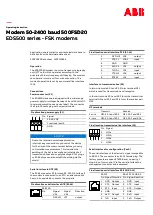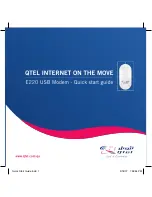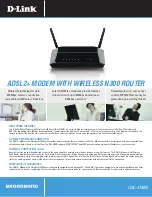
Product Manual - DM991 Series V Family - 204.4092.08
38
•
Regenerated from the E1 interface - Is provided by the DTE through the G.703 signal of
the E1 interface.
•
Regenerated from the digital interface - Is provided by the DTE through the CT113 signal.
The digital interface must have the clock configured as external (CT113) or CT104 sinc.
CT113.
Whichever the configuration, the clock used for the transmission should have at least ±50ppm precision
for connection in plesiochronous mode and ±32ppm for connection in synchronous (to operate according
to the G.991.2 rule). The modem automatically switches to internal clock in case of flaw in the configured
clock, but errors can occur in the transmission sequence during the commuting.
9.2.2. Plesiochronous Mode
When in plesiochronous mode, the transmission and reception clocks are independent from the line clock
which is generated by the LTU. That is why the clocks used can be from different sources.
Figure 15 shows how the clocks in the connection of two DM991 works, one operating with internal clock
and other operating with the DSL interface regenerated clock.
The LTU equipment sends the data in the DSL interface using the internal clock. In the NTU side, the
clock received from the DSL interface is taken to the E1 and digital interfaces (continuous arrows). Also,
according to the selection of regenerated clock a loop is done in the clock, so that it is used in the data
transmission by the DSL interface (traced arrow).
Back in the LTU side, the equipment uses the clock received from the DSL interface for the E1 and digital
interfaces.
Figure 15. Internal and Regenerated Clocks in Plesiochronous Mode
Figure 16 shows how the clocks in the connection of two DM991 works, one operating with the external
clock coming from the E1 interface and other operating with the DSL interface regenerated clock.
The LTU equipment receives the clock form the E1 interface and uses it to send data in the DSL interface
(traced arrow). In the NTU side, the clock received from the DSL interface is used for data transmission in
the E1 and digital interfaces (continuous arrows). Also, a loop in the clock is done, so that it is used in the
data transmission by the DSL interface (traced arrow).
In the LTU equipment, the clock received from the DSL interface is used in the E1 and digital interfaces
(continuous arrows).
The clocks work in this same way when the external clock comes from the digital interface, (from a router,
for example) instead of coming from the E1 interface.
Figure 16. E1 External Clock and Regenerated in Plesiochronous Mode
Figure 17 shows two DM991 operating with external clocks coming from the V.35 (CT113). Both digital
interfaces are connected to routers that have their clocks configured as internal.
Summary of Contents for DM991C
Page 1: ...DM991 SERIES V DM991C DM991CE DM991S DM991SE PRODUCT MANUAL 204 4092 08 rev 08 Date 8 12 2008 ...
Page 66: ...Product Manual DM991 Series V Family 204 4092 08 66 Figure 31 LDL Test Converter Mode ...
Page 89: ...Phone 55 51 3358 0100 Support 55 51 3358 0122 Fax 55 51 3358 0101 www datacom ind br ...
















































